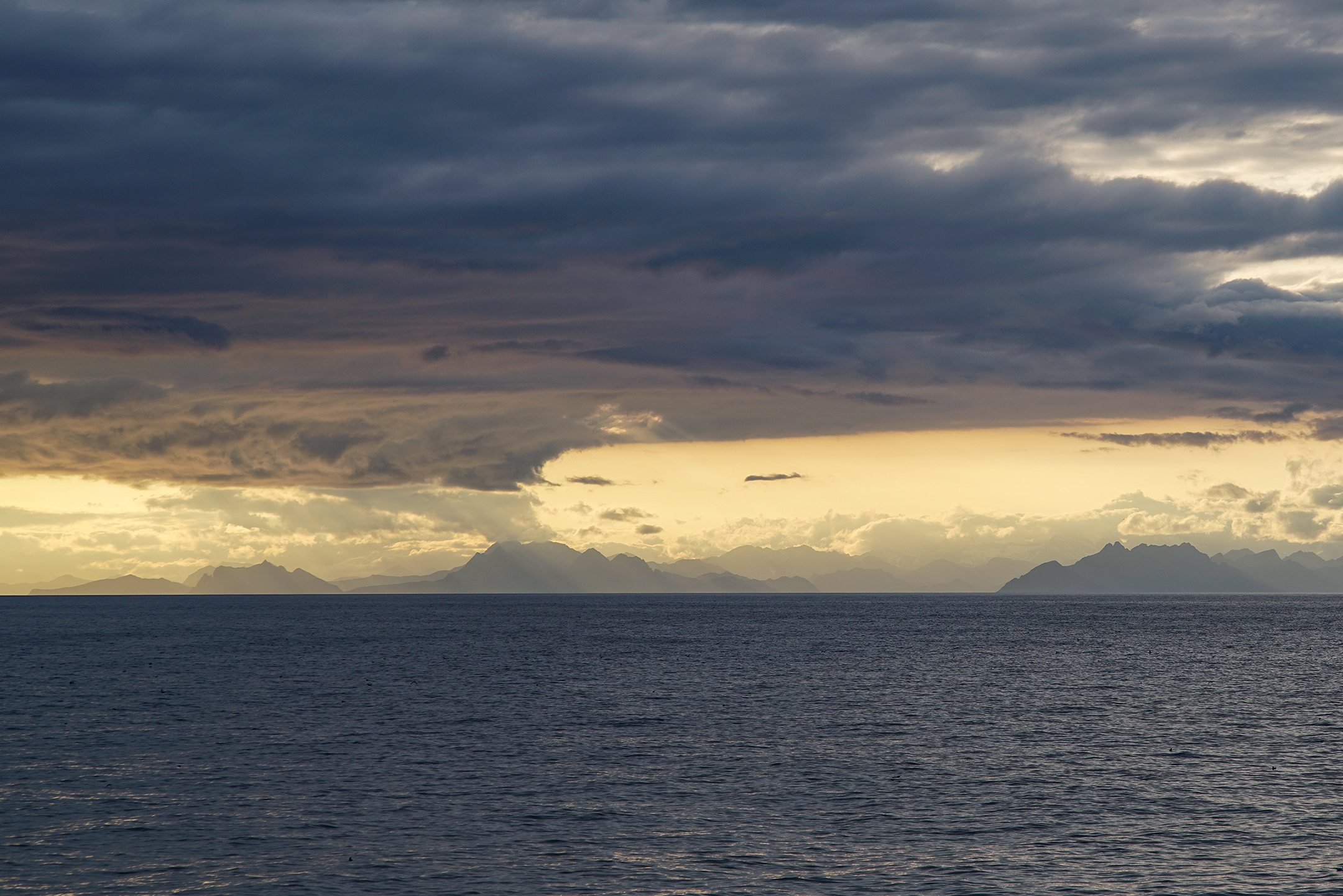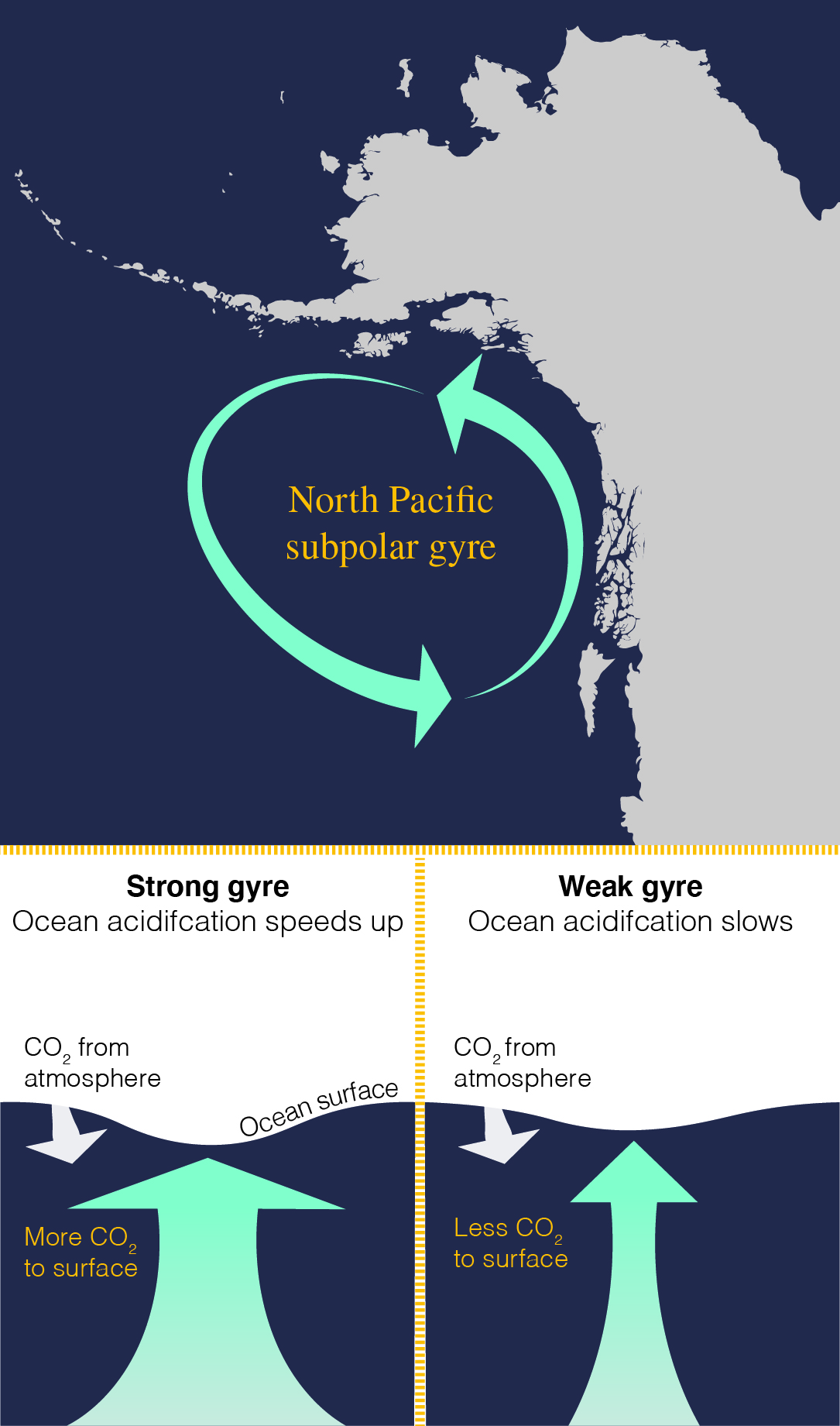Natural cycles in the Gulf of Alaska affect ocean acidification
Heather McFarland
Sept. 15, 2021
New research at the University of Alaska Fairbanks shows that the fluctuations of major wind and ocean circulation systems can temporarily accelerate or reverse the rate of ocean acidification in the Gulf of Alaska.

Dramatic clouds and Alaska’s southern coastline frame the Gulf of Alaska during a scientific cruise in summer 2017.
“We typically think of ocean acidification as this slow press onto the environment that gradually changes the carbon chemistry in the ocean,” explained Claudine Hauri, a researcher at the UAF International Arctic Research Center.
Instead, Hauri said, the research shows that the chemical conditions experienced by marine organisms can change on a daily and seasonal basis. This fluctuation occurs despite a long-term trend of ocean acidification connected to the steady rise in atmospheric carbon dioxide concentrations. The new research also documents massive cycles that happen every five to 10 years.
“Chemical conditions will deteriorate for several years in a row in offshore areas, before stabilizing or even slightly improving again,” said co-author Andrew McDonnell from the UAF College of Fisheries and Ocean Sciences. “We don’t know exactly how organisms respond to that, but in general some organisms are sensitive to these types of changes in environmental conditions.”
Hauri and her team examined ocean acidification through a model that combines physical, biogeochemical and hydrological ocean models to reproduce past Gulf of Alaska conditions from 1980-2013.
The study identified natural decadal fluctuations in chemical conditions that are driven by the strength of the North Pacific subpolar gyre.
This gyre is a large wind-driven system of circulating ocean currents affecting the Gulf of Alaska.

This graphic of the North Pacific subpolar gyre in the Gulf of Alaska shows how the strength of the gyre can speed or slow ocean acidification based on the amount of carbon dioxide brought to the surface of the ocean.
When the gyre is strong, it brings more deep water, which is rich in carbon dioxide, to the ocean's surface. This can accelerate ocean acidification, creating extreme events that cause stress to sensitive organisms. When the gyre is weak, less carbon is delivered to the surface, which can dampen the ocean acidification effect or even reverse it.
From 2011 to 2013, the model showed a strong phase of the gyre resulted in an extreme ocean acidification event in the center of the Gulf of Alaska. This event preceded the 2014–2016 “blob” of exceptionally warm water in the same region.
“The blob followed right after this very strong ocean acidification event,” Hauri explained. “First, some organisms were probably stressed because of ocean acidification, and then they were hit right after with heat.”
Hauri emphasized that more research is needed to understand the consequences of multiple simultaneous stressors on marine ecosystems, and to identify how ocean acidification and climate change interact.
Another implication of this work is that multiple decades of observational data are necessary to separate out the long-term trend of ocean acidification from the natural variability driven by the strength of the subpolar gyre. This type of dataset does not currently exist for the Gulf of Alaska.
Hauri and her team hope that this work and the efforts it prompts will provide needed information for people engaged in subsistence and commercial fisheries as they plan and adapt for the future.
This research was published in Nature Communications Earth and EnvironmentDOI:10.1038/s43247-021-00254-z and funded by the National Science Foundation and NOAA’s Climate Program Office. Co-authors include Rémi Pagès, Malte Stuecker, Seth Danielson, Katherine Hedstrom, Brita Irving, Cristina Schultz and Scott Doney.
ADDITIONAL MEDIA CONTACTS: Alice Bailey, ambailey2@alaska.edu, 907-328-8383
ADDITIONAL CONTACTS: Claudine Hauri, chauri@alaska.edu, 907-687-4136; Andrew McDonnell, amcdonnell@alaska.edu, 907-474-7529


